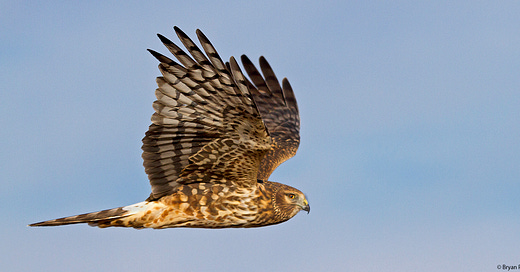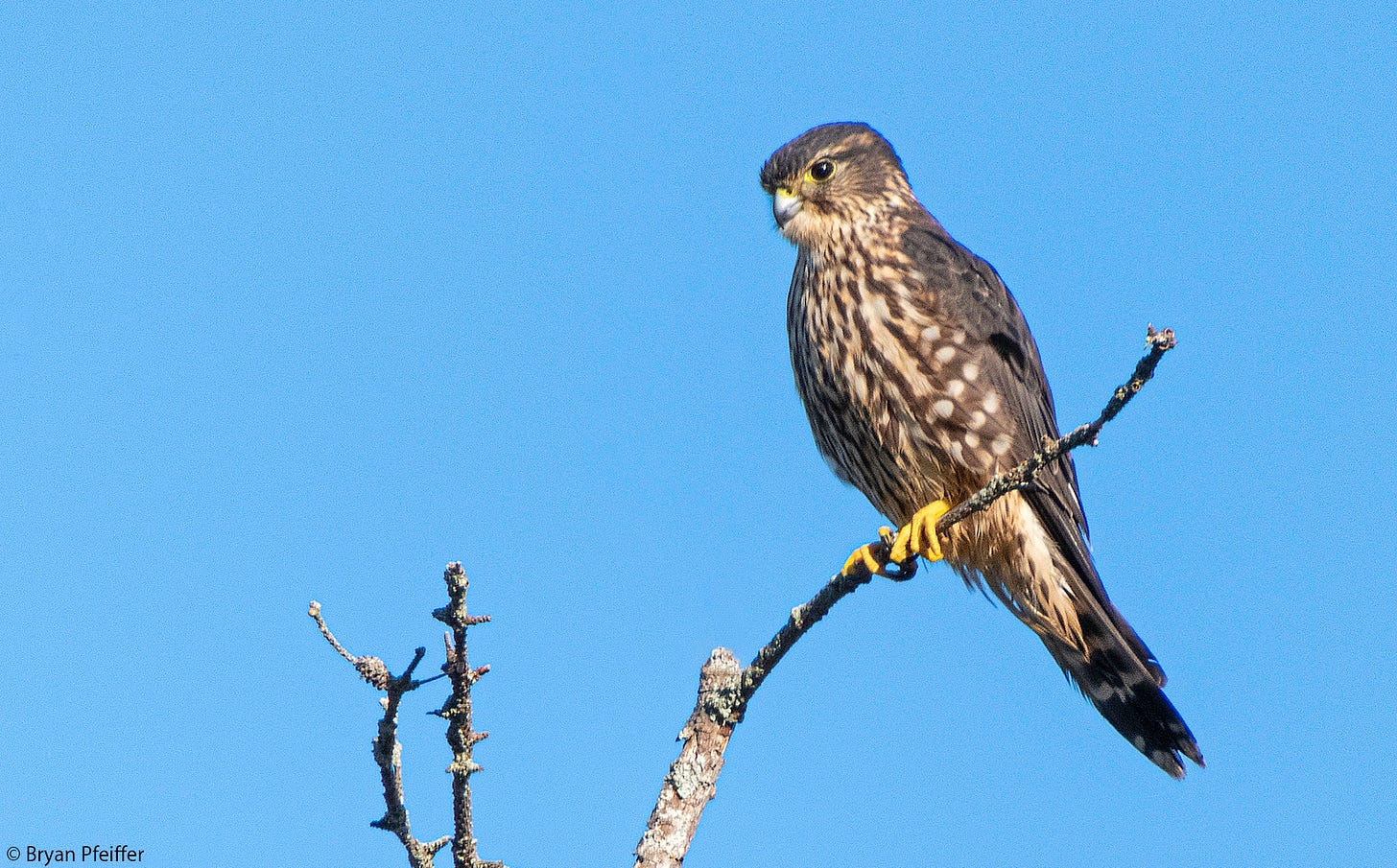Hawks and Humans on a Burning Planet
Birds of prey are now migrating by the millions over a damaged world — and near you.
I STEPPED OUT my back door this past weekend into one of the great animal migrations on Earth. No, not wildebeests crossing the Serengeti. Not caribou traversing the Arctic. And not penguins marching in Antarctica. But no less spectacular.
These were hawks over the capital city of Montpelier, Vermont, here in the U.S. Barely flapping, they circled and rose skyward on thermals, higher and higher until finally breaking free of the updrafts to glide southbound on their annual migration toward the tropics.
Magnificent birds of prey are circling and gliding over most of you as well this autumn. So look up. And perhaps look within.
Most birds migrate in obscurity because we humans are in large part too distant, unaware or distracted to notice them overhead. Warblers, sparrows, flycatchers and many other songbirds fly by night, invisible but for their plaintive calls in the dark or when they come to earth to rest and refuel. Sandpipers and other shorebirds fly high and generally away from the likes of us. Terns and petrels and shearwaters navigate great distances at sea.
Raptors, however, are a migration visible from where you stand. Hawks (including buzzards in Europe), eagles, harriers, kites and falcons fly by day over land where we can see them on the move. And because most of these birds avoid flying over water, they funnel in huge numbers along peninsulas or shorelines, across straits, and past mountaintops. Or sometimes simply anywhere overhead.
Legendary and reliable migration outposts for witnessing these mass migrations include Veracruz, Mexico; Eilat, Israel; and the Strait of Gibraltar. At any of these sites (and others), tens or hundreds of thousands of raptors might fly by in a single day.
The flights are in large part solar- and wind-powered. Sunshine creates thermals on which the hawks rise without expending much energy. And once they gain enough altitude, the raptors break from the column of warm air and glide south on northerly autumn winds. They repeat the routine throughout much of their migrations.
These established hawkwatches, as we call them, are part science, part social event — and wholly vigils for a planet under assault. We count migrating raptors year by year because some species are in decline. Pick your usual culprits: pesticides, deforestation, industrial agriculture, and the political corruption fostering such devastation. At hawkwatches we celebrate the force and grace of raptors even as we tally their losses.
We humans also count losses among our own: death by disease, war, gun violence, poverty, racism. We count refugees displaced by those wars (each one a war crime). And now we count climate refugees as well.
On this burning planet, an average of 20 million people are at any given time displaced from their homes or lands owing to fire, floods, droughts, rising seas and other climactic traumas around the world, according to the United Nations High Commissioner for Refugees (UNHCR). By 2050 there may be 1.2 billion refugees due to ecological threats and resulting civil unrest.
Hawks know nothing of the disasters beneath their wings. They fly over Israelis and Palestinians, drug cartels and oil wells, and the dead and displaced by war and the climate and biodiversity crises. They’re flying over the demonstrators and policy makers now gathered with urgency for Climate Week in New York City.
And they’re flying over a disaster here in my home state of Vermont. Landlocked, mountainous and prosperous, Vermont had long been considered a “climate haven,” even a safe destination for climate refugees. But that changed when the rains came on July 10 and 11 of 2023, and again in 2024, and the rivers rose to flood communities across my state, a trauma most likely made worse by global overheating.
My backyard here in Vermont is by no means a hawkwatching hotspot. My single biggest encounter these past few days amounted to 38 Broad-winged Hawks rising and circling, in what we call “a kettle,” then boiling over to glide southbound and onward over a state still struggling to recover from — and come to terms with — our terrible flooding in July.
The birds and the rest us — we all move or stumble onward through life with no guarantees of safety. A Broad-winged Hawk might migrate thousands of miles this autumn or next spring only find its usual forest destination on fire or gone altogether. It would be like passengers on a transcontinental flight discovering before landing that their airport was now a shopping mall or an oil refinery or a clear-cut.
The only difference, of course, is that the birds neither know nor control their fate. We control their fate. And whether we control our own fate, whether our leaders and polluters can be forced to listen to us and ultimately act is, like a hawk in the wind, no sure thing without purpose, bravery, direction and determination.
Resources
If you’re new to hawkwatching, your best bet is to find established sites where you’ll also find nice people who will get you oriented and help you identify what’s flying overhead. My readers in the Americas can find sites thanks to the Hawk Migration Association of North America (HMANA).
The Royal Society for the Protection of Birds’ has informative raptor information pages, including sites across the U.K.
Hawkwatch International engages in research, education and conservation. It staffs sites in the western U.S.
HMANA maintains and amazing dataset on hawkwatching counts, including up-to-date reports from around the Americas.
The Raptor Population Index monitors population dynamics among birds of prey.








Beautiful, Bryan. The writing here has such a light touch yet carries real weight. I might even make a bird metaphor out of it... Really nicely done.
I live in one of the osprey migration hotspots in the UK. They pass through Poole Harbour in Dorset, UK, feeding as they go. Not huge numbers by any means, but enough to warm the heart. For the second year, ospreys have also nested in Poole Harbour, and chicks have fledged. First time in roughly 180 years.